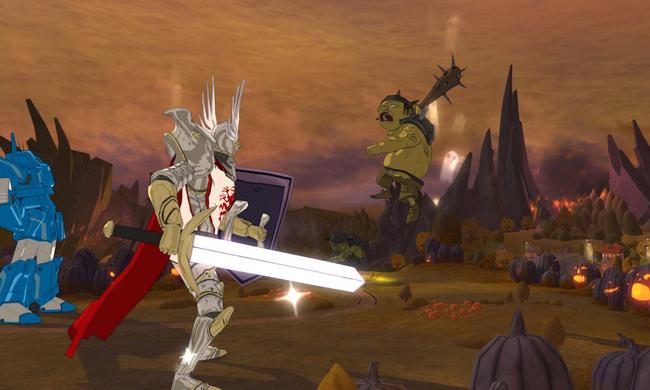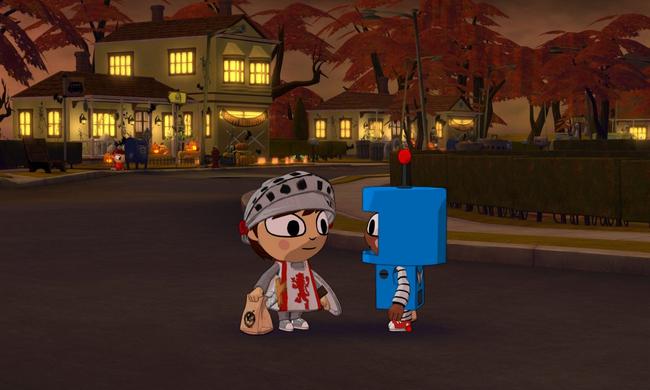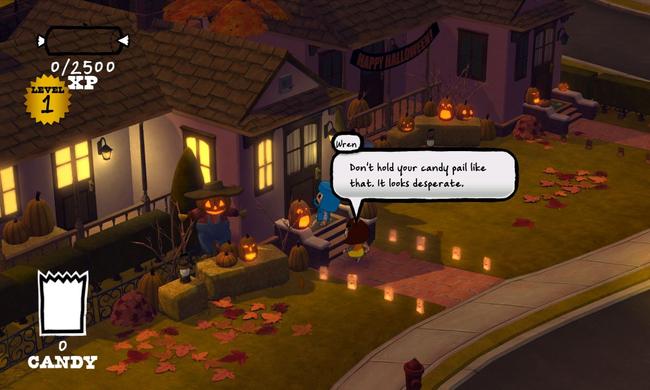
Gods Eater Burst Review
It has taken over a year for it to leave Japan, but after fantastic sales and strong word-of-mouth, the PSP-exclusive Gods Eater Burst has finally landed here in the West. A sequel to the original God Eater, Burst is an expansion pack that adds more than twice the number of missions, enhanced visuals, and far more content and features.
Now, many people are expectedly claiming that Gods Eater Burst is nothing more than a Monster Hunter Clone. Let's be honest here - Phantasy Star Online was the one to create the formula - Monster Hunter simply picked it up and ran with it, becoming a huge hit over in Japan yet only causing a slight tremor here in the West. Lately, however, Capcom has been pushing a much more monumental advertising campaign and where it was once stuck in the mud the series has finally gained some traction.
Namco Bandai looks to capitalize on this formula and bring everything back to a more science-fiction arena. Not only that, but it brings with it a much more mature narrative with fully-voiced characters, and a deeper, more complex combat system that breathes a lot more life into the genre while offering up a huge wealth of information for players to try and absorb.

Gods Eater Burst tells the story of a very bleak and depressing future. Humanity is all but extinct in this apocalyptic world thanks to the arrival of an alien life form known as the Aragami who gorge on literally anything within biting distance for their sustenance, even roads and trees.
Desperate to find a way to fight back against this invading horde threatening to wipe out everything in existence, a corporation calling itself Fenrir enlists the help of "Gods", or carefully-selected human beings who have biochemical weapons called Arc Gods spliced onto their arms. The term "God Eater" comes from the fact that the front end of the Arc God can transform into a gnashing beast with giant teeth that can literally tear through the cells of the Aragami - a process that up until the invention of these tools was impossible to do.
Players are then tasked to create the main protagonist through a rather predictable, if not limited character customization process. I was able to change the look of the hair, facial features, clothes, voice and its timbre, and the color of my body and clothes.
Basically, if you have ever created a hero in Monster Hunter, there's little more you can do here. Fortunately, there are a sufficient number of choices to be at least satisfied with what I had constructed, and if all else fails you can always change the look of your character at any time in the game through the main menu.
Heading into the actual story itself, I was very appreciative of just how focused the game is on delivering a strong narrative. The game begins with a fierce fully-animated sequence that kind of shows what the planet has to put up with now that these horrifying creatures have been on the scene.
After being introduced to the headquarters (nicknamed "The Den") where I was able to access the item shops, speak to the quest NPC, engage in conversations with other people, and visit my bedroom where I could manage pretty much everything about my character, the game proceeds to shift the focus on the quest-based parameters that the story will follow for the rest of the game.

On many of these quests, you can call upon one of your friendly NPC teammates to help you out, but of course, the best way to take down a gnarly beast is to phone a friend and have them join up in an ad-hoc connection, which supports up to four players.
This can logically take a big bite out of the difficulty level when you actually have people who know what they're doing, but the computer AI is actually very competent. They know when to dodge, when to keep their distance and when to quickly heal or revive a fallen character, sometimes even when they are forced to sacrifice themselves.
Strategy is the name of the game when it comes to properly carrying out a quest, especially when it comes to not having to fret about someone having to drag your deadbeat corpse back to the safety zone. What became immediately important was that I needed to read the descriptions of the missions I was going on beforehand, because it contained suggestions on how best to go about accomplishing the assigned task and defeating whatever monster has been wreaking havoc lately.
What was remarkable was the sheer amount of depth when it came to the customization of the arms I would be carrying into my crusade. Swords, guns, armor, shields, and more can all be equipped with different attachments of special materials to make these items much more effective and much more useful against the enemy.
This just goes to show just how attentive players must be to the upcoming battle, as they all tend to play out differently depending on what you carry with you. Sometimes for example, you may have to backtrack to other lands in order to excavate (read: hunt and gather) more of a type of ammo to have an easier go at the newest mission. One of the benefits of having an Arc God that eats Aragamis for breakfast is that it also has the ability to steal items from these walking towers of destruction whether they are alive or dead.
Unfortunately, the impact that this game had on me was softened by a near-infuriating control scheme, a problem which plagues a lot of real-action action titles such as this one. Trying to run away from a pursuing beast with the analog stick who loves to pounce, and then attempting to turn around and aim my gun with the directional pad after holding L to go into my crosshairs is a really annoying experience.

Now, I can't fault the game all on its own, because it really comes down to just how dilapidated the PSP hardware is to a game that is trying to match the kinetic pace of its console brethren. Without a second analog stick to handle the camera, and the shoulder buttons already taken (R being used to dash or dodge, and L handling the aforementioned lock-on or aiming mechanisms), there wasn't a whole lot that the developer was able to do in that regard.
Of course, the fact that L is only used for crosshairs means that they could've done it Resident Evil 4 style, and holding L while moving the control stick may have been quicker than having players be forced to seemingly break their fingers attempting to have both hands on one side of the handheld while trying to use the trigger button. It's probably the worst attribute this game has, and the developers could have put more time into making it work.
I have also noticed that the graphics while being rather superb for a handheld title tend to be on the rather bland side when it comes to the actual architecture of the maps. The character animations also tended to be wooden, and the synching of the voices to the movement of the character's mouths was off on many occasions.
It wasn't all bad, however - seeing the beasts themselves tear through the land in order to converge on your location or beat a hasty retreat is remarkable. After watching this El Gigante climb over a building and bellowing out a spine-tingling roar was a fascinating experience.
The sheer size of the areas themselves is exemplary with each showing off a strong attention to detail that makes you appreciate what the Sony PSP can actually accomplish even on such a small screen despite bland architecture. I could also find no fault when it came to the character and monster designs, and I don't think I ever experienced any significant framerate issues or bugs or glitches to complain about.
The sound design is definitely not something I personally enjoyed, but it does the job well enough. The music for the soundtrack ranges from genre to genre - from pop to metal to instrumentals that blend into the background. I wouldn't say that there were any noteworthy tunes, but it more than does the job.
The voice acting, which is only featured in English, can be on the more disappointing side. The different personalities do shine through pretty well, but on many occasions, I found myself muttering "shut up" every time a few of them spoke. Kota was especially annoying, and almost left me tempted to mute the game.

Even with all the negativity I felt towards some of the aspects of the game, Gods Eater Burst offers enough entertaining gameplay and a neat futuristic storyline to help make it stand apart from the Monster Hunter crowd.
It also touts a wonderfully executed combat system and a wealth of ways to customize your look and the equipment you carry around with you. Couple that with the overwhelming amount of depth and level of detail it offers that allows even players who have never gotten into the whole Monster Hunter fad or had a hard time breaking in to the quasi-prehistoric setting plenty to latch on to.
Hopefully with the release of Sony's upcoming NGP, Namco Bandai and developer Shift will have another go at this and be able to clear up a lot of these issues, especially with a much-needed second analog stick helping to back it up.
In the meantime, this PSP RPG might be worth your time if you’re after a decent Monster Hunter-style game – just be well aware that there are issues like its poorly-managed control scheme, mediocre English dub, and the myriad of other small issues that prevent this game from getting an unequivocal recommendation. Good, not great.